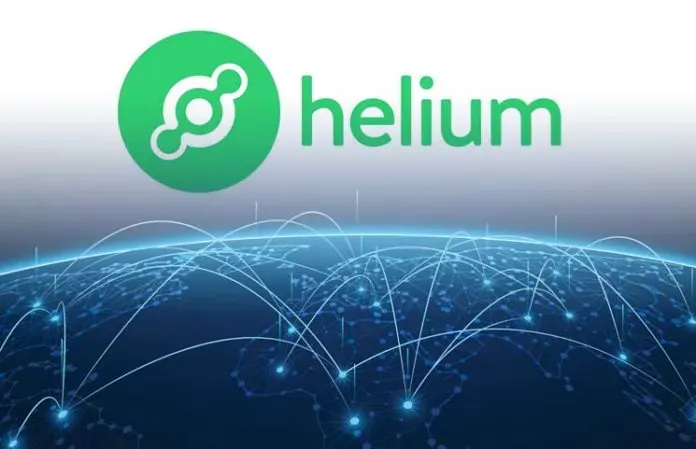In the ever expanding world of cryptocurrencies, Bitcoin still has the spotlight. It gets the most mainstream media coverage, and is the most talked about at the dinner table.
Why? Although Bitcoin was the first cryptocurrency to launch, and had a fair token distribution, the main reason it gets so much attention is because of the amount of dollars it represents - currently $119,000 for a single Bitcoin, and climbing.
However, the price of Bitcoin more accurately reflects the collapsing debt-based fiat system rather than its inherent value.
Bitcoin is an open-source protocol, and its properties of limited supply, censorship-resistance and cross-border transfers can be applied to other digital assets as well.
End of Fiat
Crypto fanatics cannot deny that the world currently operates on debt-fueled fiat. The Dollar, the Euro, and the Yuan still dominate global commerce, despite the debts backing them growing at an exponential and unsustainable pace.

We have written many times before about how the debt-based financial system is unsustainable, and how the central planners are preparing to replace it with CBDCs. Meanwhile, global communities are working tirelessly to build out an alternative decentralized financial system.
If we can agree that the current system is unsustainable, and that the future economy will run on CBDCs or crypto (not dollars), one must ask question, how valuable will Bitcoin be when it is no longer used to speculate on fiat debasement?
In this article, we will make an educated guess on which categories of crypto tokens will be the most valuable in the future.
Digital Cash
Satoshi Nakamoto's original vision was to make Bitcoin a peer-to-peer form of "digital cash". However, since its block size was artificially limited to 1MB, it has become censorship-resistant "digital gold" - another hedge against fiat debasement.
However, supporting only ~7 transactions per second, on-chain Bitcoin cannot facilitate much economic activity in the real world (Yes, the lightning network works, but incentivizing people to use it has been a challenge).
To keep the vision of fast, low-fee digital cash alive, projects like DASH, Digibyte, Ravencoin, and others have stepped up to the plate, and have been building relentlessly throughout multiple bear markets.
One major advantage these digital cash projects have over more modern smart-contract platforms is their fair token distributions. They launched before the time of venture capitalists, insiders, and founding teams that claimed nearly 50% of the token supply up-front.
Smart Contract Platforms
Everything changed in 2015 when a decentralized smart-contract platform called Ethereum launched, allowing anyone to permissionlessly mint their own censorship-resistant, supply-limited token atop the blockchain.

To create tokens atop Ethereum and send them to other wallets, a gas fee needs to be paid to the network (miners or validators). The gas coins that power Ethereum ($ETH) have a market cap greater than 1/10 of Bitcoin.
It's important to take into account how vast money printing and speculation over the years have affected the dollar value of these cryptocurrencies.
The question is, will the gas or application tokens atop a blockchain be more valuable in the future, when fiat is out of the question? Time will tell.
Seeing the potential of smart contracts and decentralized finance (DeFi), hundreds (if not thousands) of alternative decentralized application (dapp) platforms hit the scene, each with the ability to mint its own tokens.
Decentralized Exchanges (DEXes)
Arguably, the most popular dapp to have been created using smart contracts is the DEX (decentralized exchange), which allows you to permissionlessly trade one token for another on the same blockchain.
Uniswap became the most popular DEX on Ethereum after drawing inspiration from Bancor.
Bancor minted its own token (BNT) which was required to provide liquidity on their DEX. Uniswap also launched its own token (UNI), whose sole purpose was to vote on governance decisions like protocol changes.
These DEX tokens may have more value in the future if the holders are entitled to a share of the revenue earned from trading activity.
Bancor and Uniswap allow you to convert from one Ethereum-based token into another, but what if you want to trade a Solana-based token for an Ethereum-based token? That's where a cross-chain DEX come in.
Cross-Chain DEXes
Using a decentralized protocol like THORChain, Maya Protocol, or Chainflip you are able to permissionlessly trade tokens on one blockchain for tokens on another blockchain.

As CBDC-pushing governments start to clamp down on permissioned centralized exchanges like Binance and Coinbase, these permissionless cross-chain DEXes will likely become more popular.
The tokens that power these cross-chain DEXes (RUNE, CACAO, FLIP, etc) could increase in value as their exchange volumes surge in the coming months and years.
Also, the tokens powering front-end interfaces like LeoDex and El Dorito that aggregate these cross-chain DEXes together, allowing you to swap between a wider range of blockchains, could increase as well.
What other application-level tokens could be valuable in the future?
DePIN Tokens
Decentralized Physical Infrastructure Networks (DePIN) use blockchain-based token incentives to roll-out real world infrastructure like wireless, compute, and energy networks.

Independent operators earn tokens by installing and maintaining decentralized infrastructure like wireless hotspots, GPUs, hard drives, solar panels, and more.
What makes it revolutionary?
DePIN protocols are able to pay contributors directly via the blockchain, instead of going through the banking system, which is rife with different sets of rules and regulations, depending on the country.
These decentralized networks could end up replacing the centralized infrastructure we have today. If that is the case, the tokens that back these networks could increase in value substantially, especially when you consider they can be used to pay for services (wireless, data, energy, etc) directly.
One disadvantage of most DePIN tokens is their unfair initial token allocations, where nearly half the supply is allocated to the team and investors from the beginning, which could negatively impact things like governance.
There are other categories of crypto tokens like AI agents (VIRTUALS, BID, etc) that could also be valuable in the future, but we will have to watch them evolve over time.
Until next time...
The concept of "money" and "wealth" will be changing in the coming years and decades as we transition from a debt-based financial system to a purely digital (and hopefully decentralized) one. At this happens, demand for fiat dollars will decrease relative to other assets.
There is still time for dollar speculation on Bitcoin and other cryptocurrencies, but eventually the fiat system will become irrelevant, and utility will become king. At that point, the types of tokens discussed above may become the most valuable digital assets to hold.
If you learned something new from this article, be sure to check out my other posts on crypto and finance here on the Hive blockchain. You can also follow me on InLeo for more frequent updates.
Further Reading
DePIN Article Series [1]
Sources
Helium Logo [1]
THORChain Logo [2]
Posted Using INLEO